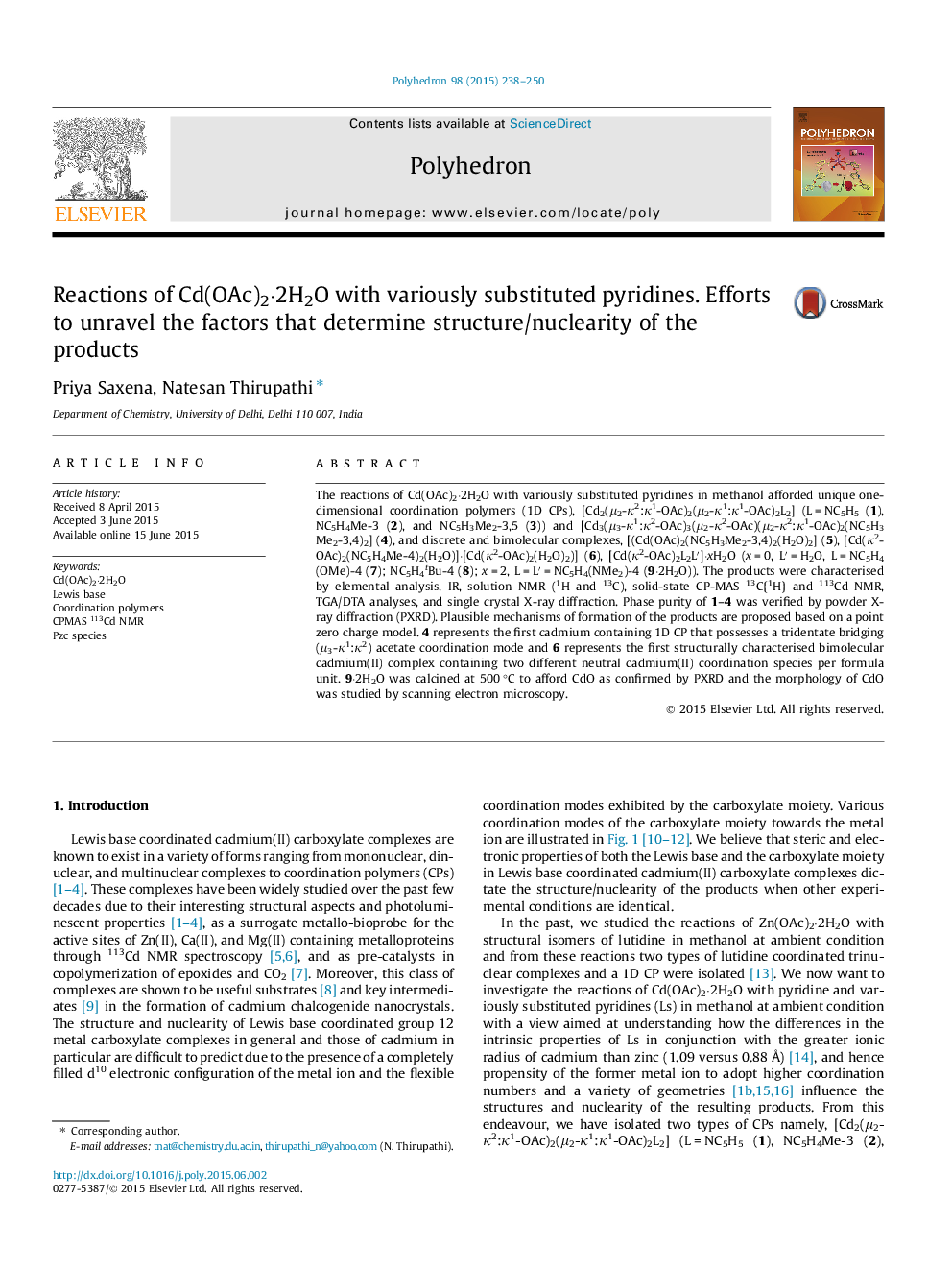| Article ID | Journal | Published Year | Pages | File Type |
|---|---|---|---|---|
| 1334363 | Polyhedron | 2015 | 13 Pages |
The reactions of Cd(OAc)2·2H2O with variously substituted pyridines in methanol afforded unique one-dimensional coordination polymers (1D CPs), [Cd2(μ2-κ2:κ1-OAc)2(μ2-κ1:κ1-OAc)2L2] (L = NC5H5 (1), NC5H4Me-3 (2), and NC5H3Me2-3,5 (3)) and [Cd3(μ3-κ1:κ2-OAc)3(μ2-κ2-OAc)(μ2-κ2:κ1-OAc)2(NC5H3Me2-3,4)2] (4), and discrete and bimolecular complexes, [(Cd(OAc)2(NC5H3Me2-3,4)2(H2O)2] (5), [Cd(κ2-OAc)2(NC5H4Me-4)2(H2O)]·[Cd(κ2-OAc)2(H2O)2)] (6), [Cd(κ2-OAc)2L2L′]·xH2O (x = 0, L′ = H2O, L = NC5H4(OMe)-4 (7); NC5H4tBu-4 (8); x = 2, L = L′ = NC5H4(NMe2)-4 (9·2H2O)). The products were characterised by elemental analysis, IR, solution NMR (1H and 13C), solid-state CP-MAS 13C{1H} and 113Cd NMR, TGA/DTA analyses, and single crystal X-ray diffraction. Phase purity of 1–4 was verified by powder X-ray diffraction (PXRD). Plausible mechanisms of formation of the products are proposed based on a point zero charge model. 4 represents the first cadmium containing 1D CP that possesses a tridentate bridging (μ3-κ1:κ2) acetate coordination mode and 6 represents the first structurally characterised bimolecular cadmium(II) complex containing two different neutral cadmium(II) coordination species per formula unit. 9·2H2O was calcined at 500 °C to afford CdO as confirmed by PXRD and the morphology of CdO was studied by scanning electron microscopy.
Graphical abstractThe reaction of Cd(OAc)2·2H2O with less nucleophilic and less basic 3,5-lutidine (pKa = 6.15) in methanol at ambient temperature affords a linear one-dimensional coordination polymer (1D CP) 3, while the analogous reaction carried out with more nucleophilic and more basic 3,4-lutidine (pKa = 6.46) affords a syndiotactic 1D CP 4.Figure optionsDownload full-size imageDownload as PowerPoint slide
